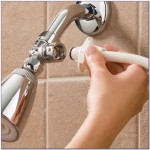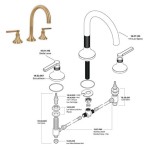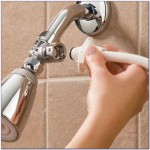Essential Considerations: Acrylic Bathtubs vs. Fiberglass Resin Bathtubs
Choosing the ideal bathtub material for your bathroom renovation is crucial to ensure durability, aesthetics, and functionality. Two popular options in the market today are acrylic bathtubs and fiberglass resin bathtubs. This article delves into the essential aspects of each material, providing insights to help you make an informed decision.
Acrylic Bathtubs
Acrylic bathtubs are renowned for their non-porous, durable construction. Here are some key advantages of acrylic bathtubs:
- Durability: Acrylic is highly resistant to chipping, cracking, and fading, ensuring longevity.
- Easy Maintenance: Acrylic surfaces are smooth and non-porous, making them easy to clean and maintain.
- Warm to the Touch: Acrylic bathtubs retain heat well, providing a comfortable and warm bathing experience.
- Design Flexibility: Acrylic can be molded into various shapes and sizes, offering ample design options.
- Stain Resistance: Acrylic is resistant to most household chemicals and stains, preserving its pristine appearance.
Fiberglass Resin Bathtubs
Fiberglass resin bathtubs are a lightweight and cost-effective alternative to acrylic bathtubs. Here are some of their key features:
- Lightweight: Fiberglass is a lightweight material, making it easier to handle and install.
- Affordability: Fiberglass bathtubs are generally more affordable than acrylic bathtubs.
- Non-Porous: Like acrylic, fiberglass is non-porous, preventing bacteria growth and moisture penetration.
- Durability: Fiberglass resin bathtubs are durable and can withstand everyday wear and tear.
- Limited Design Options: Fiberglass bathtubs are typically available in fewer shapes and sizes compared to acrylic bathtubs.
Key Differences
To further assist your decision-making, here is a summary of the key differences between acrylic and fiberglass resin bathtubs:
| Feature | Acrylic Bathtubs | Fiberglass Resin Bathtubs |
|---|---|---|
| Material | Non-porous acrylic | Fiberglass reinforced with resin |
| Durability | Highly durable, resistant to chipping and cracking | Durable, but more susceptible to scratching |
| Maintenance | Easy to clean, non-porous surface | Easy to clean, but may require more frequent refinishing |
| Warmth Retention | Warmer to the touch | Less warm to the touch |
| Design Flexibility | Wide range of shapes and sizes | Limited shapes and sizes |
| Cost | More expensive | More affordable |
Making the Choice
Ultimately, the best choice between an acrylic bathtub and a fiberglass resin bathtub depends on your specific needs and preferences. Consider factors such as durability, ease of maintenance, design aesthetics, and budget when making your decision. If you prioritize longevity, low maintenance, and design versatility, an acrylic bathtub might be the ideal option. If cost-effectiveness and lightweight installation are your primary concerns, a fiberglass resin bathtub may be a suitable choice. By carefully considering the essential aspects outlined in this article, you can make an informed decision that meets your unique bathroom needs.

Acrylic Vs Fiberglass Tub Which Material Is Best For You

Acrylic Vs Fiberglass Tub What S The Difference American Standard Walk In Tubs

Acrylic Vs Fiberglass Tub Which Material Is Best For You

4 Common Bathtub Materials Pros Cons What To Buy For Your Bathroom

Is Your Tub Fiberglass Or Acrylic Ezpro Express

The Best Bathtub Material Acrylic Vs Resin Long Home

What Bathtub Material Is In My Bathroom Maryland Tub Tile

Can Plastic Acrylic Or Fiberglass Bathtubs Shower Stalls Be Reglazed Refinished America Refinishing Pros

The Best Bathtub Material Acrylic Vs Resin Long Home

Acrylic Vs Fiberglass Tub Long Home S
Related Posts








